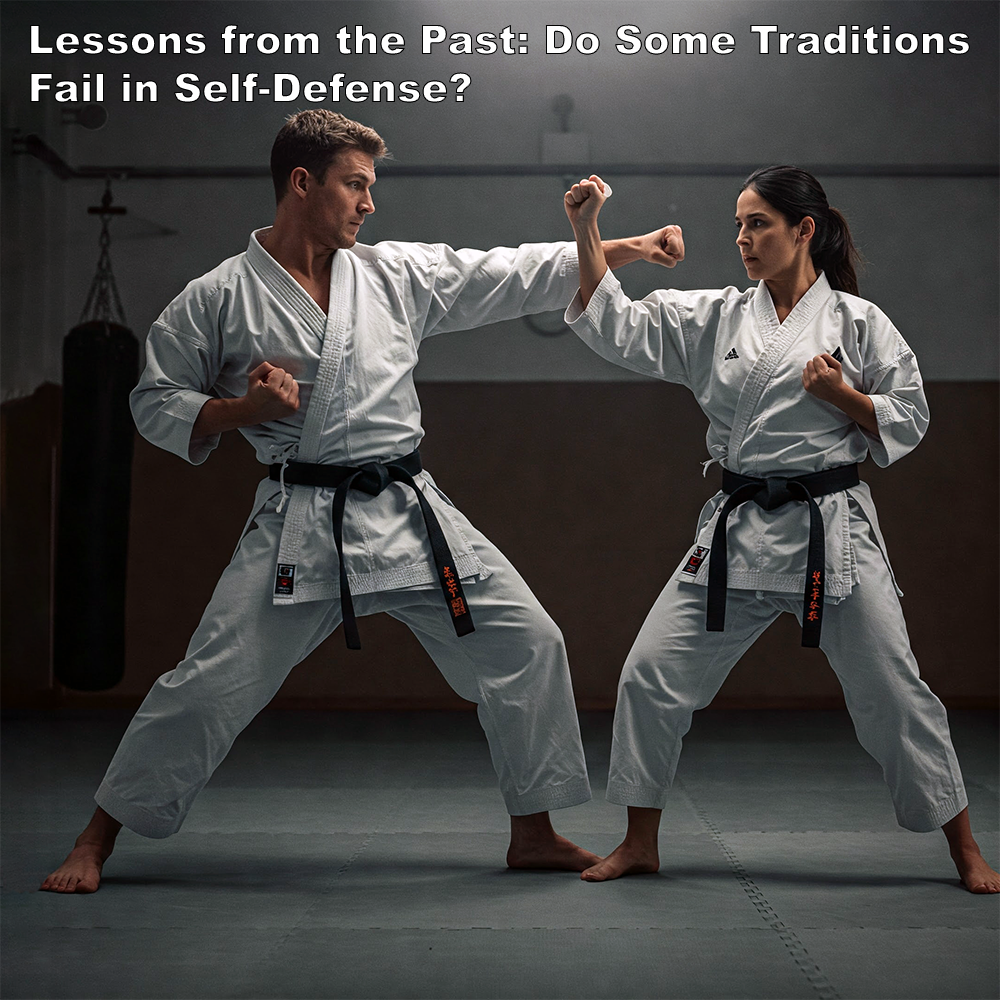
(Approx 2 minute 35 second read)
Social media today is flooded with people showing off their ideas of bunkai applications. Every day, my feed is full of someone performing something or other.
.
Sometimes, these ideas are just cringeworthy, so I move on. It’s not worth losing time over.
.
Now, I get that for many people, karate is just a fun way to wind down after a long day. They’re not looking for anything real. Some just want to move, sweat, and enjoy training without overcomplicating things. And that’s fine.
.
As instructors, we have to meet students where they are. Some want depth, some don’t. But even for those who see the dojo as an escape, karate has more to offer than just physical movement.
.
Okay, here we go. That said, where does it end?
.
I honestly can’t see the point in perpetuating the myth that most of these so-called bunkai applications are actual self-defense. It beggars belief.
.
Recently, I saw a post by a well-known instructor. He shared pictures of an equally well-known Okinawan master, long passed, who he claims was his sole instructor since the 1960s, demonstrating bunkai – for, you guessed it, self-defense.
.
Now, I get it – training has to start somewhere. You can’t throw full resistance and aggression at beginners right away. But come on. An ‘oi-zuki’ attack to the midsection, followed by the defender performing seven, yes seven, defensive techniques while the attacker stands frozen, arm outstretched? That’s not training. That’s play-acting.
.
And for those who insist that the pressure will ramp up over time – maybe, but let’s be honest, if a self-defense technique is flawed, it’s flawed no matter the pressure or aggression.
.
Yet, this is how applications are commonly demonstrated. Why? Because too many people accept whatever their instructor taught them without question.
.
“My instructor told me this, so it must be true!”
.
Sorry, but that doesn’t cut it. You have to think for yourself. Because those same students will eventually become instructors, and if they never question what they’ve learned, they’ll keep passing down the same flawed ideas. And so, the myth lives on.
.
Let’s be clear – if you’re training for self-defense, it’s not a game. It’s not a sport. It’s an investment in your safety, and it deserves your full attention. If it’s not self-defense, then say so. Don’t claim that it is. And if you do, then prove it – don’t just put on a performance like some ‘Kabuki’ play.
.
Now, imagine the irony: you spend years training your applications, convinced you’re learning how to defend yourself. Then, one day, you actually need to fight back… and your training fails you.
.
The attacker doesn’t leave his arm hanging in midair. Your techniques, drilled into you in a compliant dojo (there’s that repetition again), crumble under pressure. Worse, those bad habits become a liability.
.
It’s not just useless – it’s dangerous.
.
Don’t get me wrong – I have immense respect for skilled, knowledgeable, and dedicated instructors. I count many of them among my associates, some of them Okinawan. But let’s stop pretending that everything wrapped in the label of traditional karate equals real self-defense. Because it isn’t.
.
Perhaps in reality, some of the Okinawan teachers from that period were really teaching us what we call ‘Gendai Budō’ – a modern fighting art, all along, shaped more by structure, discipline, and physical development than by raw, functional self-defense. (Yes they were)
.
If that’s the case, then what many consider ‘traditional’ today might not have been intended for real combat at all.
.
And yet, the myth persists. I keep writing about it because I keep seeing it.
.
But why do so many people refuse to think for themselves? I don’t know, maybe there’s something in the water.
.
.
Written by Adam Carter
